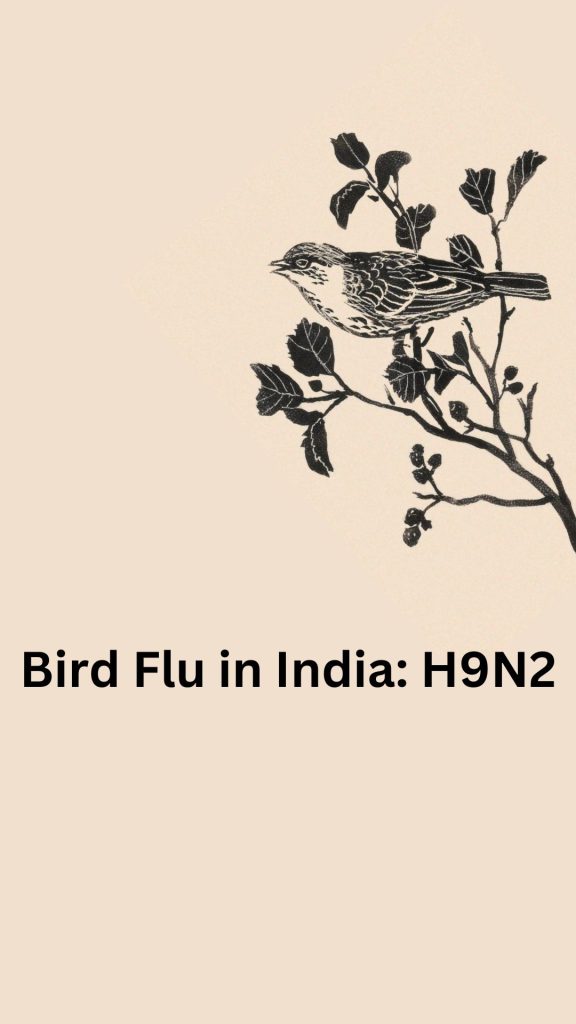The World Health Organization (WHO) has recently confirmed a human case of bird flu in India, caused by the H9N2 virus. This is the first reported case of the year, and it involves a four-year-old child from West Bengal who was hospitalized in February with respiratory symptoms and high fever.
What is the H9N2 virus(bird flu virus)?
The H9N2 virus, a subtype of the influenza A virus, primarily affects birds but can occasionally infect humans. This virus has been identified in several countries, including China and Vietnam, and is typically transmitted through direct contact with infected poultry or contaminated environments. Although it is relatively rare in humans, H9N2 virus infection can cause respiratory symptoms and is essential to be aware of and take precautions to avoid exposure to infected poultry.
Read More: Understanding World Day Against Child Labour 2024: Its Theme, History, and Impactful Data

Preventative Measures for Bird Flu Virus
To mitigate the risk of H9N2 virus infections, experts are urging a multi-faceted approach, including rigorous surveillance of poultry populations, swift response to outbreaks, and vaccination of poultry. Additionally, strict biosecurity measures and public awareness campaigns are crucial in preventing the spread of the virus. Health organizations like the World Health Organization (WHO) and the European Centre for Disease Prevention and Control (ECDC) are closely monitoring the situation and educating the public on the importance of vigilance and preparedness.
Here is some of the presentation method that you can try to save yourself from bird flu
To prevent the spread of bird flu viruses, several measures can be taken:
- Avoid Unprotected Contact:
- Avoid direct contact with birds and their secretions, blood, or feces.
- Wear gloves, masks, and eye protection when handling birds or surfaces contaminated with bird flu viruses.
- Biosecurity Practices:
- Implement biosecurity measures to prevent the introduction of bird flu viruses into poultry flocks.
- Keep poultry flocks isolated from wild animals and wild bird populations.
- Restrict visitors to poultry farms.
- Provide workers with clean protective clothing, equipment, and disinfection facilities.
- Proper Handling and Cleaning:
- Handle birds and surfaces contaminated with bird flu viruses with care.
- Clean and disinfect equipment and vehicles entering and leaving the farm.
- Change clothing and footwear before moving onto other activitie.
- Vaccination:
- Vaccination can greatly increase resistance to infection and prevent clinical signs and death.
- Antigenically matched and properly administered vaccines can prevent AI infections.
- Monitoring and Reporting:
- Monitor birds for any unusual symptoms.
- Report sick birds or unusual bird deaths to the state or federal government.
- Personal Protective Equipment (PPE):
- Use PPE such as gloves, masks, and eye protection when handling birds or surfaces contaminated with bird flu viruses.
- Public Awareness:
- Educate the public on the risks and preventative measures for bird flu viruses.
- Encourage people to avoid contact with wild birds and other animals that may be infected.
- Travel Precautions:
- Avoid high-risk areas and activities when traveling to countries where bird flu viruses are prevalent.
- Follow local guidelines and take necessary precautions to prevent exposure.
- Health Surveillance:
- Participate in health surveillance and monitoring programs if you have had close contact with infected birds or surfaces contaminated by them.
- Monitor your health for symptoms of avian influenza virus infection for 10 days and report any symptoms to your state or local health department.
- Regular Cleaning and Disinfection:
- Regularly clean and disinfect surfaces, equipment, and vehicles to prevent the spread of bird flu viruses.
By following these preventative measures, the risk of bird flu virus transmission can be significantly reduced.
